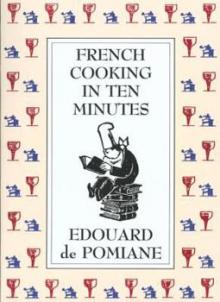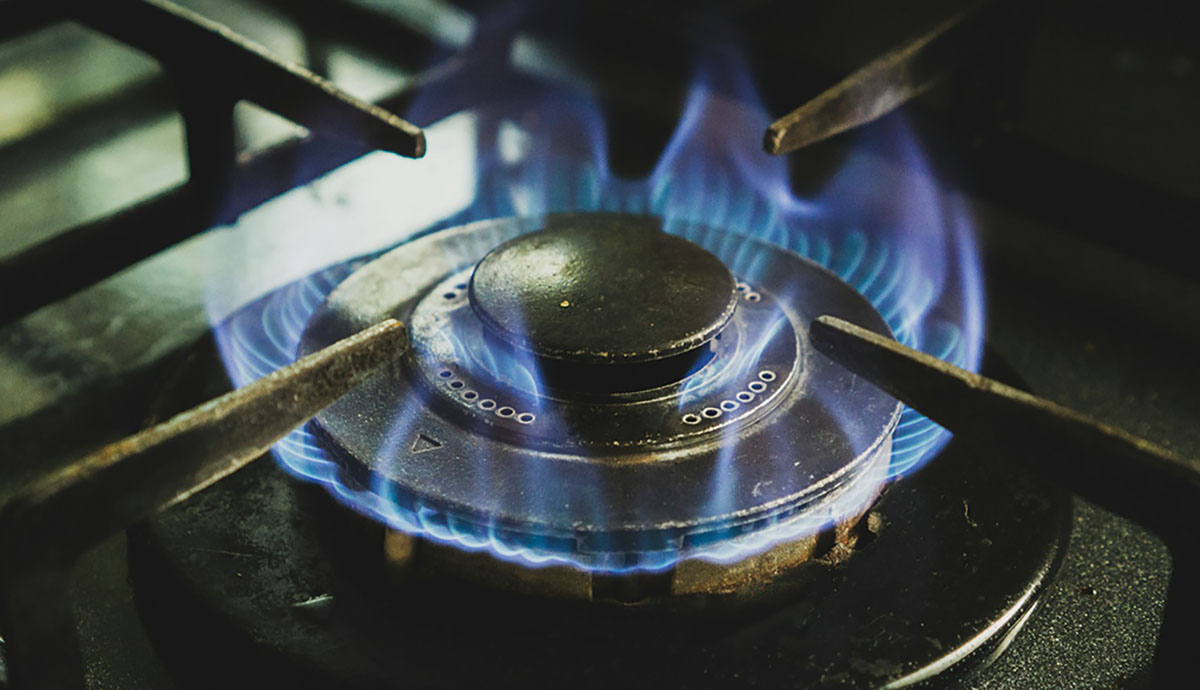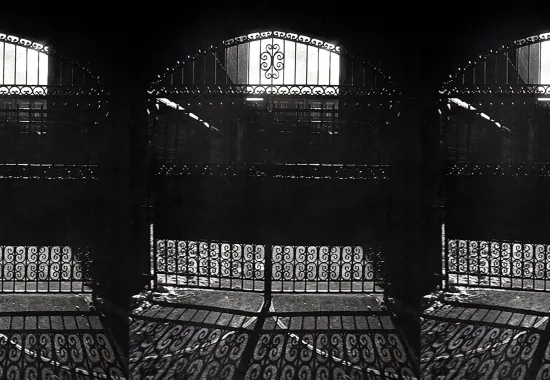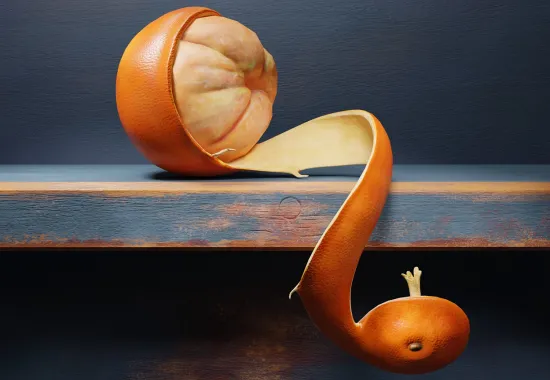French Food for the "New Woman"
Edouard de Pomiane’s 1930 classic French Cooking in Ten Minutes, subtitled Adapting to the Rhythm of Modern Life, is dedicated to “Madame X, asking for ten minutes of her kind attention.” That’s quite a saucy line, but one that’s also seriously meant. While the preface announces that this volume has been written for “students, dressmakers, secretaries, artists, lazy people, poets, men of action, dreamers, scientists, and everyone else who has only an hour for lunch or dinner,” its primary audience seems to be the working woman, the gal with limited time and money who still wishes to eat well. This is the daughter and granddaughter of the type that Sarah Grand called “the new woman” in an 1894 essay in North American Review: “the new woman is a little above him [the “Bawling Brotherhood” of patriarchy], and he never even thought of looking up to where she has been sitting apart in silent contemplation all these years, thinking and thinking, until at last she solved the problem and proclaimed for herself what was wrong with Home-is-the-Woman’s-Sphere, and prescribed the remedy.” By the mid-1920s this was the modern woman—an artist, secretary, nurse, teacher, doctor, scientist, and a hundred other things. Women entered the workforce in increasing numbers in ’30s—then supplanted men in the factories and on the farms during the Second World War. Many never went back to the kitchen, but that doesn’t mean they lost a love of food.
In 1930 or 2030, who wouldn’t want to sit down to a delightful meal prepared in only ten minutes? Of course, we now have conveniences that make a plate of hot food possible in just two minutes or less. But nothing prepackaged and microwaved can compare with what this book promises to put in your mouth. And yet, the title of Pomiane’s volume calls for a suspension of disbelief that seems bound to fail. After all, French food in just ten minutes? How could that be possible? And would the result be desirable? The book anticipates this confused cri de coeur with another wonderous assertion in the very first sentence, “I am neither crazy nor a monomaniac.” Surely Pomiane’s contemporaries raised an eyebrow and murmured, “Hmmm, we’ll see about that.”
 Including the preface, the book is divided into twelve sections, moving from methods to recipes, through the usual divisions of hors d’oeuvres, sauces, eggs, fish, vegetables, meat, and desserts—with an unusual (for French cuisine) but wholly welcome chapter on noodles tucked among them. As the title of the introduction makes clear—“Some Indispensable Concepts for Understanding This Beautiful Book”—this volume may be slender but it isn’t modest, false or otherwise. But, true to his word, our Author isn’t insane or narcissistic. He simply wants us to understand from the very beginning that he’s done us an enormous favor by writing something of both use and beauty. And he’s right; this little manual combines charm and method, personality and science, to give us the greatest amount of pleasure ten minutes may afford. That is, at the table. Clothed.
Including the preface, the book is divided into twelve sections, moving from methods to recipes, through the usual divisions of hors d’oeuvres, sauces, eggs, fish, vegetables, meat, and desserts—with an unusual (for French cuisine) but wholly welcome chapter on noodles tucked among them. As the title of the introduction makes clear—“Some Indispensable Concepts for Understanding This Beautiful Book”—this volume may be slender but it isn’t modest, false or otherwise. But, true to his word, our Author isn’t insane or narcissistic. He simply wants us to understand from the very beginning that he’s done us an enormous favor by writing something of both use and beauty. And he’s right; this little manual combines charm and method, personality and science, to give us the greatest amount of pleasure ten minutes may afford. That is, at the table. Clothed.
While most sections contain stand-alone recipes for dishes, they are meant to be composed into multi-course meals, which is why Pomaine gives us a section of sample menus after cooking methods (boiling, deep frying, broiling, pan frying and roasting—or why you can’t roast anything in ten minutes) and before the recipe chapters. If you can prepare these dishes in only ten minutes, that leaves a luxurious fifty to enjoy four to six short courses (if you count vegetables separately). These range from smoked sausage and olives, loin lamb chops, sautéed potatoes, green salad, cheese, and chocolate éclairs (what a lunch!) to beet soup, larks en cocotte, sautéed green beans, cheese, and coeur à la crème with jam (yes, larks are songbirds).
You’re likely wondering how such a feast may be prepared so fast. By being modern, of course! That is, by wasting no movements and by being organized: “unless you organize yourself so that the various preparations overlap, it will take you half an hour to cook three dishes.” By putting water on to boil before you take off your coat, by using three or four burners at once, and by buying certain parts of the meal readymade as the French typically do—such as cheese, pastries, and so on. Taking the first menu as an example, the sausage is sliced to cook quickly or bought fully cooked, and the potatoes are cut quite thin—or you can use leftover cooked potatoes (Pomiane encourages cooking more than you need of such staples for a recipe later in the week). Chops take just a few minutes on each side in a properly hot pan, a green salad is the work of a moment, and cheese and pastries are no work at all. Et voilà. Lunch is served.
As delicious as that menu is to eat, this book is a joy to read—not only because Pomiane’s charisma carries us along but because he’s looking out for us—for our clothes (advice to avoid fat splatter), our well-being (“be careful not to burn your mouth”), and our manners (“In order to have as pleasant and as elegant a dinner as possible, do your best to avoid running back and forth between the kitchen and the dining room” ). He’s mindful of our digestion (you’re quick in the kitchen to be slow at the table and savor coffee after your meal), our palate (“artificial” trout “born and raised on fish farms” are “fed too scientifically” resulting in flabby filets), our wallets (“Only a millionaire can afford black caviar … for the rest of us, there’s red caviar”), our sex lives, (on garlic soup: “If there are two of you, you should both eat this soup”), and even the organization of our kitchens (“Since the saucepans and the frying pans fit into each other, you can store them neatly inside your cabinet”). French Cooking In Ten Minutes is, while fantastic, too functional a title for such tender care.
Naturally, I don’t agree with all of Pomiane’s pronouncements. You can indeed cook asparagus in just a few minutes and hollandaise is never always a sure thing, however careful you are. And there are far too many recipes here for tripe and kidneys, of various kinds, and parts of the pig many do not frequently enjoy (trotters, ears, tail). But you should buy this book, nevertheless, and enjoy it for all the other recipes and for the way in which it exemplifies and conveys modernity’s intermingled love of science and art, and for Pomiane’s good humor and good sense: “If you want to decorate your kitchen with appetizing pictures, it is best to frame them under glass so the grease from cooking doesn’t spoil them. When you’re cooking, be sure to open the window as often as you can, and once a week sponge off the kitchen walls with a little soapy water. That way, your kitchen will be a spotlessly clean laboratory that you will transform, I’m sure, into an artist’s studio”. The new woman really can have it all.






